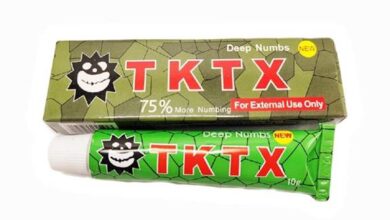Secure Your Future: How to Buy Property with Super Funds

Investing in property through self-managed superannuation funds (SMSFs) has become increasingly popular among Australians looking to secure their financial future. The appeal of using SMSFs for property investment lies in the potential for significant tax advantages, asset diversification, and the sense of having direct control over one’s retirement funds. This comprehensive guide will outline the fundamentals of how to buy property with super and addresses why it has become an attractive avenue for astute investors.
Understanding the SMSF Framework
Before diving into property investment through an SMSF, one needs to understand the framework that governs SMSFs. These funds are private superannuation funds regulated by the Australian Taxation Office (ATO) and are set up for the sole purpose of providing retirement benefits to the members. With SMSFs, members are typically also the trustees, meaning they have full responsibility for the fund’s compliance, investment decisions, and management.
The Compliance Hurdle
Navigating the compliance requirements is a crucial aspect of SMSF management. Trustees need to ensure that the fund’s investment strategy adheres to the superannuation laws and that it is reviewed regularly. The eligibility of a property as an SMSF investment and the intricacies of the borrowing arrangements called ‘Limited Recourse Borrowing Arrangements’ (LRBAs) all fall under the purview of compliance.
Choosing the Right Property
The process to buy property with super starts with choosing the right asset that aligns with the fund’s investment strategy. Since the primary goal of an SMSF is to provide for retirement, the property investment should be considered with long-term returns in mind. Factors such as location, potential for capital growth, rental yields, and property management need careful evaluation.
Financing an SMSF Property Purchase
When it comes to financing, buying a property outright is the most straightforward option, but if borrowing is necessary, LRBAs are the mechanism to do so. These specific loan arrangements allow the SMSF to borrow funds for a property purchase, but with the lending criteria and repayment terms being stricter than regular property loans.
The Importance of a Solid Investment Strategy
A solid investment strategy for SMSF property buying needs to consider diversification, liquidity, and the overall risk profile of the fund’s investments. Importantly, it must outline how the property fits into these parameters and how it will contribute to achieving the members’ retirement goals.
See also: Best Chair Yoga for Weight Loss Techniques and Benefits Explained
Pros of SMSF Property Investment
One of the drawing cards for those choosing to buy property with super is the potential tax efficiencies. An SMSF can reduce capital gains tax on the sale of investment property if it is held until the fund members are in pension phase. Additionally, rental income generated by the property is taxed at a concessional rate within the fund.
Asset Control and Potential Growth
Having direct control over retirement investments allows SMSF trustees to make decisions that they believe will optimise the performance of their funds. Real estate, traditionally seen as a stable investment vehicle, aligns with the goal of many SMSF trustees to grow their retirement savings sustainably.
Leveraging Superannuation
The ability to leverage superannuation funds to enter the property market is a significant drawcard. With the right property and financial advice, SMSF members can grow their retirement savings more aggressively than they might through other investment options.
Pitfalls to Consider
However, the decision to invest in property via an SMSF is not without its pitfalls. The responsibilities of being a trustee should not be underestimated, with significant penalties for non-compliance. Furthermore, property investment requires substantial capital, and locking a considerable portion of retirement savings into one property can hamper diversification.
Liquidity Concerns
Property is not a liquid asset; in times of financial stress or when the SMSF needs to access funds quickly, selling a property may not be immediate. This liquidity risk must be factored into the investment strategy.
Cost Considerations
The costs associated with establishing an SMSF, ongoing management, compliance, and property maintenance can be significant. Such expenses should be compared against the potential benefits to ensure they are justified.
Seeking Professional Advice
It is paramount for SMSF trustees to seek professional advice. This includes financial, legal, and real estate expertise to ensure that the investment strategy is sound and that the purchase of property aligns with the regulations and the trust deed of the SMSF.
In conclusion, the ability to buy property with super through an SMSF offers a compelling route for those looking to enhance their retirement savings. However, it involves a complex array of decisions, compliance requirements, and financial considerations that must be carefully weighed. With thorough research, an understanding of the risks involved, and the guidance of seasoned professionals, SMSF property investment can be a pivotal step towards securing a prosperous financial future.



